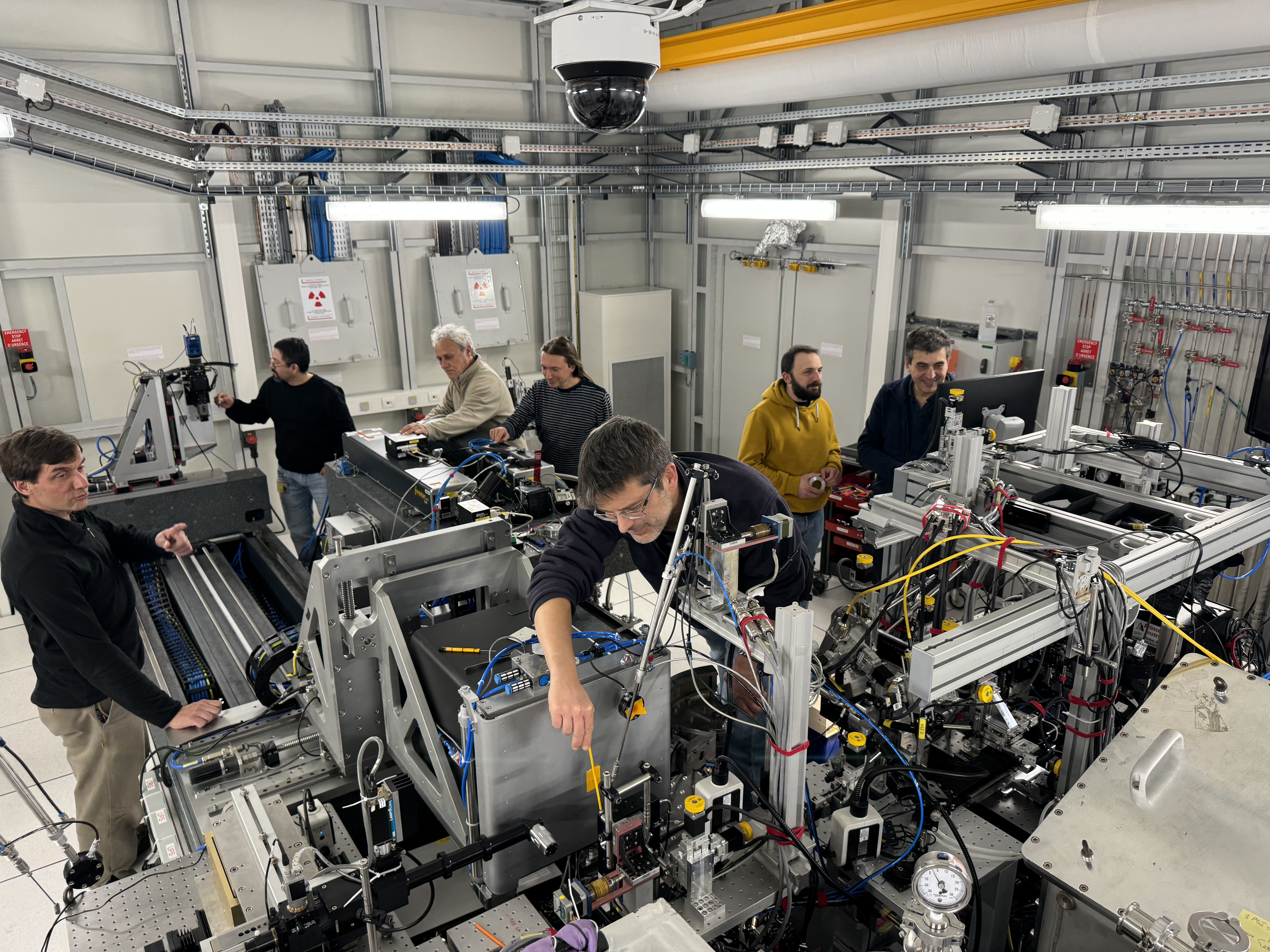- Home
- News
- General News
- Scientists synthesise...
Scientists synthesise elusive new crystalline compound of antimony and nitrogen
28-02-2024
A team led by ICCOM-CNR and LENS (Florence, Italy) has synthesized crystalline antimony nitride (Sb3N5) under extreme conditions. The crystal structure, revealed by X-ray diffraction at the ESRF, shows two different arrangements of the antimony atoms, resulting in alternated single and double layers formed by the corresponding coordination polyhedra. The discovery of long sought-after Sb3N5 has chemical significance, possibly opening the way to the synthesis of an entire class of new materials of energetic and technological relevance. The results are published in Angewandte Chemie International Edition.
The synthesis of the elusive crystalline binary compounds of nitrogen with heavier group 15 elements (phosphorus, arsenic, antimony, bismuth), namely pnictogen nitrides, has always represented an open issue in inorganic chemistry and a challenge for traditional ambient pressure synthetic methods. Beyond pure advancement in fundamental chemical science, the synthesis of these materials could lead to technological innovation in different domains.
Until recently, scientists had been able to synthesise and structurally characterise at ambient pressure only crystalline phosphorous nitride, obtained from selected chemical reactants and not directly from the elements. “The main problem is that the nitrogen molecule is very stable at ambient pressure, and its formation appears to be favoured instead of pnictogen nitrides”, explains Matteo Ceppatelli, leading investigator of the study and researcher at the ICCOM-CNR and LENS in Florence (Italy). “So we decided to use high pressure to increase the density and reduce the interatomic distances, and high temperature to overcome the energetic barriers, as this allows us to access new reactive paths, which are inaccessible at ambient conditions”, he adds.
Using this approach, some years ago, the team synthesised P3N5 polymorphs from elemental phosphorus and nitrogen as well as the first crystalline compound of arsenic and nitrogen (AsN), using ID15B and ID27 beamlines at the ESRF.
This time, the researchers focused on antimony and nitrogen. “Besides the chemical relevance of antimony nitride, the lower you go down the group 15, the higher is the expected electronic contribution to the properties of the material, and therefore the interest for potential applications”, explains Ceppatelli. Antimony is the fourth element in group 15 and the synthesis of unknown binary nitrides could potentially lead to new materials such as phase change materials, layered structures and high energy density materials.
 |
|
The team with the ESRF scientists prepare the experiment on ID27. At the front, Matteo Ceppatelli. Credits: ESRF. |
Ceppatelli and his colleagues, in collaboration with the ESRF scientists, synthesised antimony nitride (Sb3N5) from the direct chemical reaction of Sb and N2 under high pressure (32-35 GPa) and high temperature (1600–2200 K) conditions, generated using laser heated diamond anvil cells. In the structure of Sb3N5, the Sb atoms exhibit two different types of coordination by N, forming SbN6 octahedra and SbN6 trigonal prisms. Considering two additional Sb-N interactions at longer distance, the trigonal prisms can be alternatively pictured as SbN8 square antiprisms, with an increased coordination of the Sb atoms from 6 to 8.
The experiment was carried out on the new ID27 beamline using the new Extremely Brilliant Source. “EBS has played a key role in these findings: having a smaller and brighter beam with a precise positioning, we could obtain a very detailed mapping of the sample, select different spots, find the good single crystal ones and acquire diffraction patterns of sufficiently high quality to solve the structure of the reaction product”, says Ceppatelli.
“It is important to stress that all these challenging experiments at the ESRF would not be possible if it wasn’t for the great support that we get 24 hours a day from all the staff, from the scientists on the beamline to the sample environment group and the chemical lab”, he adds.
Although the discovery of the new compound could lead to applications, the work is still at a fundamental research level and further in-depth characterisation of the material is required.
Reference:
Text by Montserrat Capellas Espuny
Top image: A view of the unit cell structure of Sb3N5 at 35.0 GPa and room temperature.



